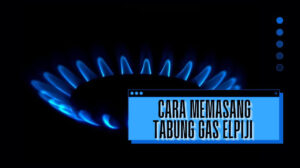
Cardiospasm achalasia is a rare but serious condition that affects the esophagus, making it difficult for people to swallow food and drink comfortably. For anyone dealing with this condition, the challenges can be both physical and emotional.
The lack of awareness about cardiospasm achalasia often leads to delayed diagnosis, which can worsen symptoms. But understanding the causes, symptoms, and treatments can offer hope and solutions.
Imagine sitting down for a meal, only to feel discomfort as the food struggles to pass down your esophagus. This is the daily reality for people living with cardiospasm achalasia. If you or someone you know is experiencing difficulty swallowing or chest pain after eating, it’s essential to understand this condition and the available treatment options.
This article dives into what cardiospasm achalasia is, what causes it, and how it can be managed.
What is Cardiospasm Achalasia?
Cardiospasm achalasia is a disorder of the esophagus, where the muscles that normally help in moving food from the mouth to the stomach fail to function properly. Specifically, the lower esophageal sphincter (LES), the muscle at the bottom of the esophagus, fails to relax, causing a blockage. This leads to difficulty in swallowing (dysphagia), chest pain, and regurgitation of food.
The condition can develop slowly over time, often causing people to adapt to the symptoms without realizing the severity of the issue. Since achalasia is a chronic condition, if left untreated, it can lead to complications like malnutrition, significant weight loss, and an increased risk of esophageal cancer.
For a deeper dive into the specifics of achalasia and how it differs from other esophageal disorders, you can explore this detailed guide on achalasia. It covers the condition’s nuances, offering more insights on its causes and treatment options.
Common Symptoms of Cardiospasm Achalasia
The symptoms of cardiospasm achalasia often progress gradually, which is why some people may not seek help until their symptoms become severe. Here are the most common signs to look out for:
- Difficulty Swallowing (Dysphagia): This is the hallmark symptom of cardiospasm achalasia. People may feel like food or liquids get stuck in their chest.
- Chest Pain: Chest discomfort, especially after meals, is another significant symptom.
- Regurgitation of Food: Due to the esophagus’s inability to move food properly, undigested food may come back up.
- Weight Loss: The inability to eat comfortably can lead to significant weight loss.
- Heartburn
- Coughing, especially at nigh.
In severe cases, patients may also experience coughing or choking, especially at night.
Causes of Cardiospasm Achalasia
The exact cause of cardiospasm achalasia remains unknown, but researchers believe it could be related to nerve degeneration in the esophagus. Here are some factors thought to contribute to the development of this disorder:
- Autoimmune conditions, where the body mistakenly attacks healthy cells.
- Viral infections that damage the nerves controlling the esophagus.
- Genetic predisposition.
- Nerve Degeneration: The loss of nerve cells in the esophagus is a primary factor.
In many cases, there is no single identifiable cause. However, these potential triggers indicate the complexity behind this disorder. Early diagnosis and treatment are crucial to managing symptoms effectively.
Diagnosis of Cardiospasm Achalasia
Diagnosing cardiospasm achalasia typically involves several tests:
- Esophageal Manometry: Measures the rhythmic muscle contractions of the esophagus.
- Barium Swallow: X-ray imaging to observe the movement of barium through the esophagus.
- Endoscopy: A flexible tube with a camera is used to view the esophagus and stomach.
Treatment Options
While there is no cure for cardiospasm achalasia, several treatments can help manage the symptoms:
- Medications: Certain medications, like nitrates or calcium channel blockers, help relax the LES and improve swallowing.
- Balloon Dilation: A balloon is inserted into the esophagus and inflated to stretch the LES, allowing food to pass through more easily.
- Surgical Treatment: A more permanent solution is a procedure called Heller myotomy, where the surgeon cuts the LES to allow better food passage.
- Botox Injections: Botulinum toxin can be injected into the LES to help it relax.
While medications and dilation may offer temporary relief, surgery is often the most effective long-term solution for managing cardiospasm achalasia.
Lifestyle Changes for Managing Cardiospasm Achalasia
In addition to medical treatments, lifestyle modifications can help improve symptoms and prevent complications. Here are a few tips:
- Eat Smaller, Frequent Meals: Large meals can increase pressure on the esophagus.
- Chew Food Thoroughly: This helps ease the passage of food through the esophagus.
- Avoid Lying Down After Eating: Staying upright for at least an hour after meals can reduce regurgitation.
Incorporating these small changes into daily life can significantly improve the quality of life for people with cardiospasm achalasia.
Long-Term Outlook for People with Cardiospasm Achalasia
With proper treatment, most people with cardiospasm achalasia can manage their symptoms and lead normal lives. However, regular monitoring is essential as the condition can sometimes recur or lead to complications like esophageal dilation or cancer.
It’s crucial to work closely with your healthcare provider to adjust treatments and lifestyle habits as needed to maintain control over the symptoms.
Cardiospasm achalasia is a complex condition that affects the esophagus, making it difficult for food to pass through to the stomach. While it can cause discomfort and frustration, understanding the symptoms and seeking treatment early can significantly improve your quality of life.
With options ranging from medication to surgery, managing cardiospasm achalasia is possible. If you suspect you may have this condition, consult a healthcare professional to explore the best treatment for your needs.



